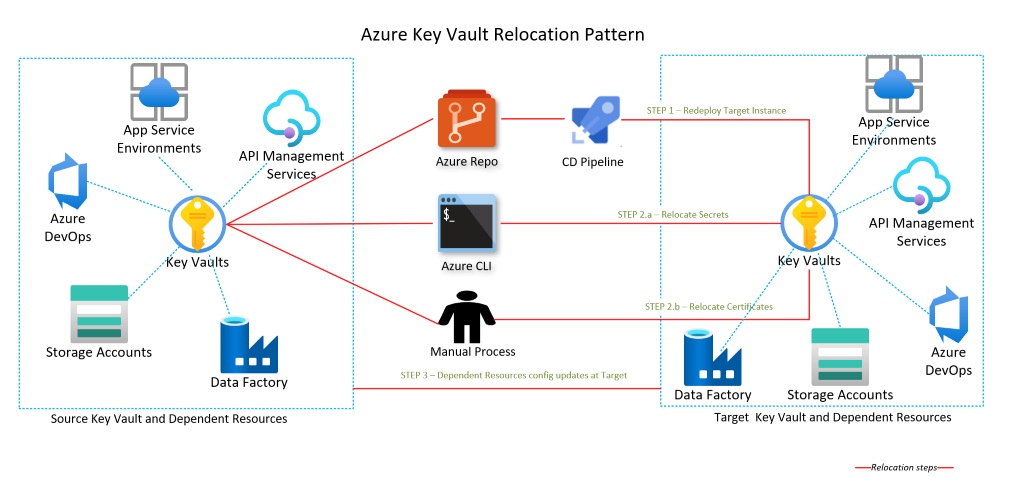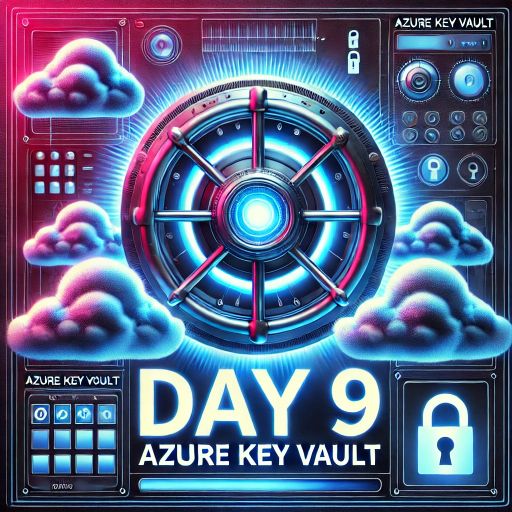In today’s digital age, the increasing sophistication of cyber threats makes secure secrets management a critical necessity for businesses. Organizations must prioritize safeguarding sensitive information like passwords, API keys, and certificates to mitigate risks such as data breaches, financial losses, and reputational harm. Enter Azure Key Vault — a robust solution that centralizes, secures, and simplifies secrets management.
Table of Contents
The Growing Cybersecurity Challenge
The threat of cybercrime continues to escalate, with the financial impact of data breaches reaching an average of $4.35 million, according to recent reports. Attackers frequently exploit weak links in security systems, and sensitive secrets often serve as prime targets. Common vulnerabilities include:
- Phishing Attacks: Deceptive schemes that trick users into revealing sensitive credentials.
- Malware: Malicious software designed to gain unauthorized access to systems and data.
- Insider Threats: Employees, whether malicious or compromised, exposing critical vulnerabilities.
The fallout from a secrets breach can be catastrophic, disrupting operations, eroding customer trust, and incurring severe regulatory penalties. Addressing these challenges demands a robust, scalable solution—and that’s where Azure Key Vault excels.
Why Choose Azure Key Vault?
Azure Key Vault is a comprehensive service designed to manage secrets, encryption keys, and certificates securely. Key benefits include:
- Centralized Secrets Management: Consolidate sensitive information like API keys, connection strings, and passwords within a unified, secure platform.
- Granular Access Control: Implement Role-Based Access Control (RBAC) to ensure only authorized users and applications can access sensitive data.
- Seamless Integration: Azure Key Vault integrates effortlessly with Azure services, third-party applications, and DevOps pipelines, providing a streamlined approach to security.
By leveraging Azure Key Vault, businesses can focus on innovation while ensuring their sensitive assets remain protected.
Core Components of Azure Key Vault
Azure Key Vault provides three primary services: secrets management, key management, and certificate management. Let’s explore each in detail.
Secrets Management: Safeguarding Sensitive Data
Azure Key Vault is designed to securely store and manage secrets such as:
- API keys
- Connection strings
- Database passwords
Example: A developer can configure Azure Key Vault to ensure that only specific applications or team members can access particular secrets. This minimizes the risk of unauthorized access or accidental exposure.
Key Management: Encryption and Decryption
Encryption keys are the cornerstone of secure data management, and Azure Key Vault supports:
- Symmetric Keys: Single key used for both encryption and decryption.
- Asymmetric Keys: Public and private key pairs for heightened security.
Additionally, Azure Key Vault simplifies key lifecycle management by automating tasks such as:

- Key generation
- Key rotation
- Key expiration reminders
This ensures encryption keys remain up to date without manual intervention, reducing operational risks.
Certificate Management: Ensuring Secure Communications
SSL/TLS certificates protect data during transmission, and Azure Key Vault simplifies their management through:
- Automated creation, renewal, and deletion of certificates.
- Centralized storage for certificates, reducing administrative overhead.
Pro Tip: Regularly monitor certificate expiration dates to prevent unexpected downtimes or vulnerabilities.
Implementing Azure Key Vault in Applications
Seamless Integration with Azure Services
Azure Key Vault integrates seamlessly with Azure services like Azure App Service, Azure Functions, and more. For example, developers can securely access secrets in their web applications using a simple code snippet:
var secret = await kvClient.GetSecretAsync(vaultName, secretName);
This approach eliminates the need to embed sensitive credentials directly within application code, significantly reducing security risks.
Best Practices for Access Control
Implementing Azure Key Vault effectively requires a focus on access control. Follow these best practices:
Principle of Least Privilege: Grant users and applications the minimum permissions necessary to perform their tasks.
Regular Access Policy Reviews: Periodically review and update access policies to align with organizational changes.
Enable Logging and Monitoring: Use Azure Monitor to track access events and set alerts for suspicious activity.
These practices help maintain a robust security posture while minimizing potential risks.
Advanced Features and Capabilities
Monitoring and Auditing
Azure Key Vault’s integration with Azure Monitor provides extensive logging and auditing capabilities. Use it to:
- Track access attempts and usage patterns.
- Detect anomalies, such as repeated failed access attempts.
Proactive monitoring allows organizations to identify and address potential threats before they escalate.
Disaster Recovery and High Availability
Azure Key Vault ensures business continuity through features like:
- Geo-Redundancy: Automatically replicate secrets across Azure regions.
- Backup and Restore: Securely back up Key Vault data for recovery during unexpected incidents.
Recommendation: Deploy Key Vault resources in multiple Azure regions to minimize downtime in the event of a disaster.
Cost Optimization
Azure Key Vault offers Standard and Premium pricing tiers. To optimize costs:
- Monitor usage to eliminate unnecessary or outdated secrets.
- Scale Key Vault instances based on your operational requirements.
Efficient cost management ensures you get maximum value without overpaying for unused resources.
Real-World Scenario: Azure Key Vault in Action
Consider a financial services company managing a large volume of sensitive data, including API keys for third-party payment gateways. By adopting Azure Key Vault, the organization:
- Centralized the management of secrets, reducing administrative errors.
- Automated key rotation, ensuring compliance with stringent regulatory standards.
- Monitored access logs to detect unauthorized attempts and respond swiftly.
This strategic implementation not only enhanced security but also streamlined operations, saving time and resources.
Conclusion: Strengthen Your Security with Azure Key Vault
Azure Key Vault goes beyond being a simple storage solution—it is a cornerstone of modern security strategies. By integrating Azure Key Vault into your operations, you can:
- Safeguard sensitive information.
- Streamline secrets and certificate management.
- Reduce risks associated with cyber threats.
With its comprehensive features, seamless integration, and scalability, Azure Key Vault empowers organizations to maintain a strong security posture in an ever-evolving threat landscape.
Take the first step toward enhanced security today. Implement Azure Key Vault and protect your business from the risks of unauthorized access and data breaches.
Stay tuned for more insights in our 30 Days of Azure Security series!

